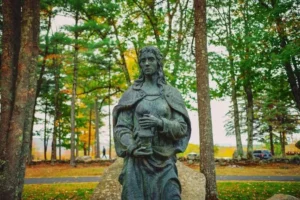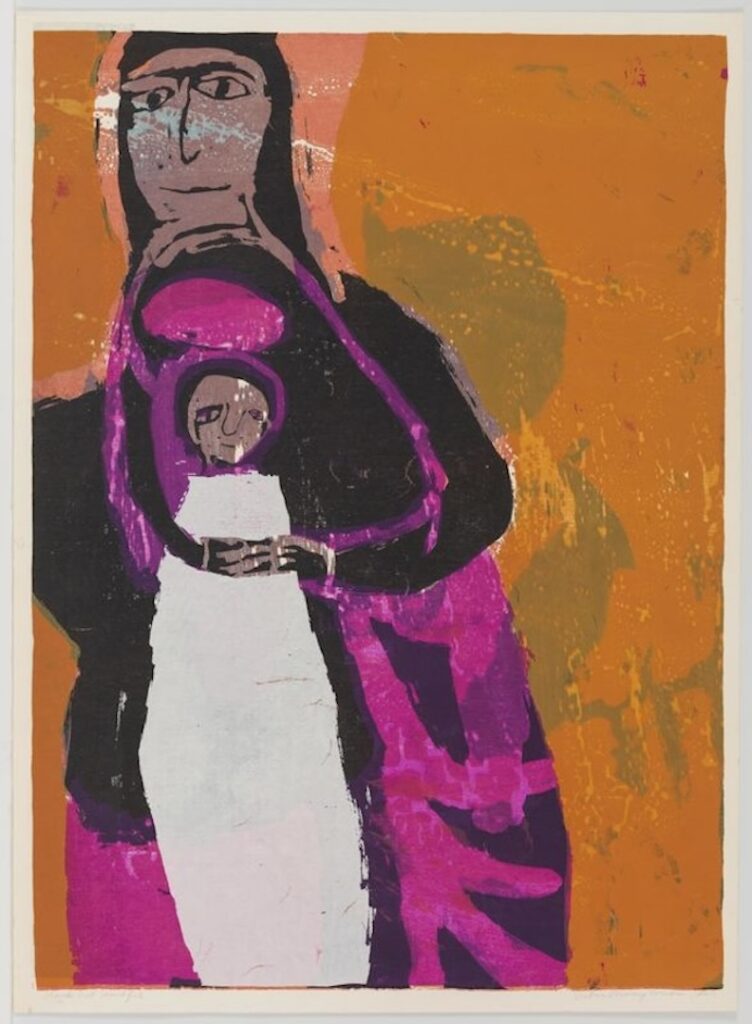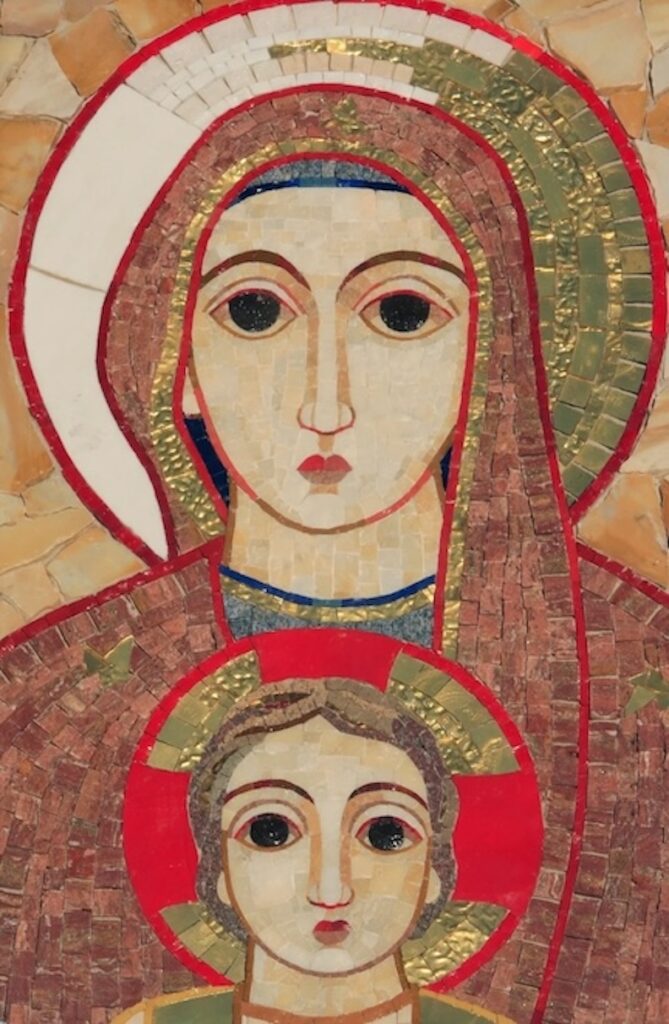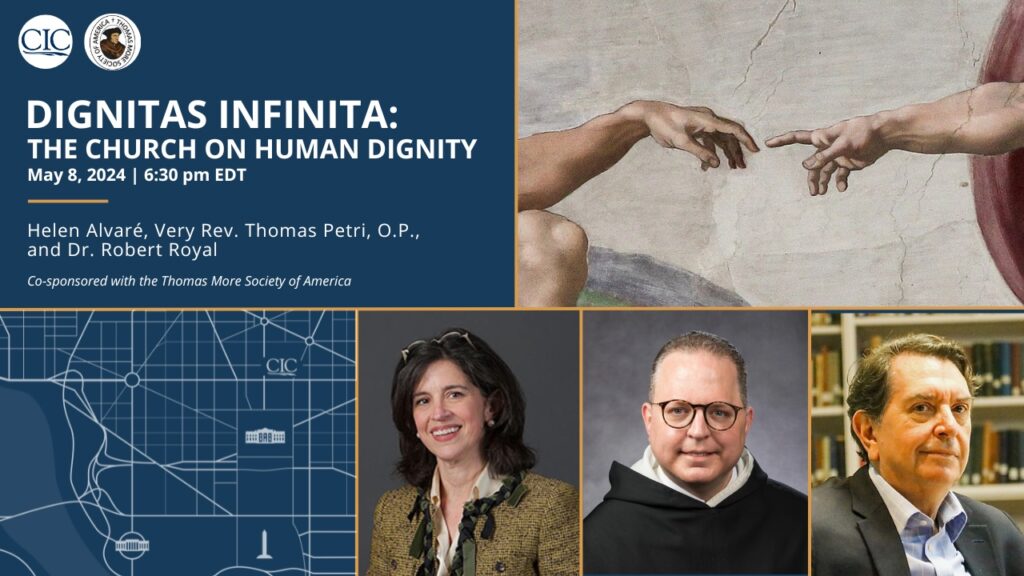Assuredly, the word of truth can be painful and uncomfortable. But it is the way to holiness, to peace, and to inner freedom. A pastoral approach which truly wants to help the people concerned must always be grounded in the truth. In the end, only the truth can be pastoral.
All
The October 7 narrative contradicted by history, by Thierry Meyssan
We reproduce the text of a lecture given on May 4 in Boulogne-sur-mer. In it, Thierry Meyssan explains that the current conflict in Palestine is not the fault of the Arab and Jewish populations. It was organized, as early as 1915, by the colonial power, with the idea that the state or states to come would never be able to guarantee their own security. Unbeknownst to them and to their own detriment, the Palestinians and Israelis, by staging the October 7th operation and its aftermath, are simply implementing this policy. By failing to stop the ethnic cleansing of the Gazans, the Anglo-Saxons are not demonstrating their insensitivity, but the fact that they regard the massacres as mere adjustment variables.
"Hamas Accepts Ceasefire Deal" Is Basically a Fake Headline, Israel Continues Bombing, by Andrew Anglin
Ben Shapiro is an Israeli government agent and the leader of the American conservative movement. His narrative on this ceasefire is that Israel never wanted a ceasefire and the Americans and the Arabs put this together, so Israel was under no obligation to accept it. It actually seems like he’s right. Israel did not put...
RNC’s New Spokesman Is a 28-Year-Old “Proud Religious Jew” Bikini Model, by Andrew Anglin
Them chosen ones is beautiful. They love our freedoms and protect our culture. It’s time those lefties realize, we wouldn’t have nothing if it weren’t for the Jews. Jews built this damn country. New York Post: “The things he’s been through have been unreal. A lot of people look at what he’s up against every...
Jesus Wept
Mary rose up, as one in sleep might rise,
And went to meet her brother’s Friend: and they
Who tarried with her said: “she goes to pray
And weep where her dead brother’s body lies.”
So, with their wringing of hands and with sighs,
They stood before Him in the public way.
“Had’st Thou been with him, Lord, upon that day,
He had not died,” she said, drooping her eyes.
Mary and Martha with bowed faces kept
Holding His garments, one on each side.–“Where
Have ye laid him?” He asked. “Lord, come and see.”
The sound of grieving voices heavily
And universally was round Him there,
A sound that smote His spirit. Jesus wept.
The post Jesus Wept appeared first on The Catholic Thing.
Erasing Christianity in France
 Blame laïcité, the militant secularism that has been official French policy since the revolution and tries to confine religious expression strictly to private life. The wearing of a crucifix in state schools is prohibited. In the “eldest daughter of the Church,” this amounts to the Stalinist practice of airbrushing out of photos of the Great Leader any subordinates who had fallen out of favor.
Blame laïcité, the militant secularism that has been official French policy since the revolution and tries to confine religious expression strictly to private life. The wearing of a crucifix in state schools is prohibited. In the “eldest daughter of the Church,” this amounts to the Stalinist practice of airbrushing out of photos of the Great Leader any subordinates who had fallen out of favor.
The post Erasing Christianity in France appeared first on The Catholic Thing.
Second armed threat in Vatican Square
 Less than a month after a man on New York’s “most wanted” list was arrested in St. Peter’s Square with three knives ahead of a papal audience, a parish priest from the Czech Republic and another man were detained Sunday before the pontiff’s Angelus address after being found to have an air gun, two knives, a box cutter, and a screwdriver in the priest’s bag. Pope Francis had yet to appear in the Square.
Less than a month after a man on New York’s “most wanted” list was arrested in St. Peter’s Square with three knives ahead of a papal audience, a parish priest from the Czech Republic and another man were detained Sunday before the pontiff’s Angelus address after being found to have an air gun, two knives, a box cutter, and a screwdriver in the priest’s bag. Pope Francis had yet to appear in the Square.
The post Second armed threat in Vatican Square appeared first on The Catholic Thing.
Happily ever after? Secular modernity’s irrational discomfort with boy meets girl
 The idea that the opposite sexes attract one another is now considered by some to be toxic – that a man’s and woman’s unplanned kiss on a date necessarily equates to sexual assault can only have come from a profound discomfort with spontaneity and playfulness between the sexes, is rooted in a feminist assumption of male aggression and malevolence. Examples abound.
The idea that the opposite sexes attract one another is now considered by some to be toxic – that a man’s and woman’s unplanned kiss on a date necessarily equates to sexual assault can only have come from a profound discomfort with spontaneity and playfulness between the sexes, is rooted in a feminist assumption of male aggression and malevolence. Examples abound.
The post Happily ever after? Secular modernity’s irrational discomfort with boy meets girl appeared first on The Catholic Thing.
Demographic trends and financial challenges force Catholic college closures
 Magdalen College of the Liberal Arts has become one of 21 Catholic colleges across the country to shut its doors, merge with another institution, or announce plans to do so since 2016. Besides fidelity to Catholic teaching, colleges in the Northeast face an additional demographic challenge in that most U.S. population growth is in the South and West. As one analyst puts it, “Starved of students and the tuition revenue they bring, small private colleges in New England have begun to blink off the map.”
Magdalen College of the Liberal Arts has become one of 21 Catholic colleges across the country to shut its doors, merge with another institution, or announce plans to do so since 2016. Besides fidelity to Catholic teaching, colleges in the Northeast face an additional demographic challenge in that most U.S. population growth is in the South and West. As one analyst puts it, “Starved of students and the tuition revenue they bring, small private colleges in New England have begun to blink off the map.”
The post Demographic trends and financial challenges force Catholic college closures appeared first on The Catholic Thing.
Marco Rubio, Tom Cotton, Other Gays Send ICC Threatening Letter Regarding Potential Warrant for Jews, by Andrew Anglin
This whole theoretical International Criminal Court (ICC) arrest warrant for Bibi Netanyahu and other top Jews appears to be a fake news story. There is still no evidence that the ICC was ever moving to do this. There were rumors, and then Bibi decided to record a video message in English whining about it. Whenever...
‘Keane’ for Rupnik
Father Marko Rupnik’s work reminds me of the art attributed to Walter Keane, the American artist who was popular in the 1960s. His paintings of big-eyed girls and women, and of animals remain enduringly popular on posters, prints, and plates.
Keane and Rupnik are also alike in being frauds. In Keane’s case, he took credit for work actually painted by his wife, Margaret. In Rupnik’s case, the fraud was more moral and canonical; he’s been credibly accused of being a serial fornicator and a kind of spiritual rapist.
We could categorize the artistic work of both Keane and Rupnik as “Naïve.”
That term is defined by the Tate – London’s leading museum of modern art – as “simple, unaffected and unsophisticated. . .art made by artists who have had no formal training in an art school or academy.” This doesn’t mean Naïve art cannot be great. Among the artists lumped into the category are Henri Rousseau and Anna Mary Robertson, aka “Grandma” Moses.
 Noel by Margaret Keane [private collection]
Noel by Margaret Keane [private collection]
The best that can be said of Rupnik’s paintings and mosaics is that they’re a cut above the Prop Art (my coinage for propaganda art) of another religious, Sister Corita Kent, the “poster girl for Vatican II,” whose screen-print screeds were popular with hippies in the 1960s: (War is not healthy for children and other living things.)
The work of Rupnik and Kent is better termed graphic design – with anodyne messages and images meant to affect the viewer in exactly the way clever advertising does. There’s little subtlety in their work.
In Kent’s case, she used the imagery of commercialism to criticize commercialism, including appropriating a Del Monte Foods ad for canned tomatoes in her 1964 serigraph, the juiciest tomato of them all, the title being a reference to the Mother of God.
Rupnik, on the other hand, has been more sacrilegious in his behavior than in his Naïve art. Much has been made of his sexual excesses and justly so. But wait, some may say, Caravaggio, Michelangelo, and Da Vinci were all fornicators – and worse! Maybe yes, maybe no, but none of them was a Catholic priest. Plus, they were geniuses. And it’s doubtful their sins were ever worse than Rupnik’s, except, perhaps, Caravaggio’s murder of Ranuccio Tommasoni.
Consider the fact that Rupnik had suborned to silence a novice nun after sacramentally absolving her of the sexual sins he and she had committed together. There is no dispute about this. And it’s just the most egregious of the assaults he is accused of committing against his priestly vows.
 black but beautiful by Corita Kent, 1960 [Hammer Museum, Los Angeles]
black but beautiful by Corita Kent, 1960 [Hammer Museum, Los Angeles]
The incident with the novice happened in 2015 and unquestionably resulted in Rupnik’s laetae sententiae excommunication. In 2020, the Jesuits – Rupnik’s religious order – formally expelled him, and the Congregation for the Doctrine of the Faith excommunicated him. That was in May. Also in May, the excommunication was lifted, presumably because Rupnik had repented. Excommunication is, after all, a medicinal penalty – if you take your medicine, so to speak, spiritual health may be restored.
But the restoration of access to the sacraments does not ipso facto demand the rehabilitation of ministry. And there are any number of other priests who have been either laicized or ordered to a monastery to spend the rest of their lives in prayer and penance – in some cases for less notorious canonical crimes than those Rupnik has committed. And given the level of public scandal involved in Rupnik’s crimes, it’s difficult to understand why such penance has not been imposed on him.
Or. . .why he still clearly commands the favor of Pope Francis and others in the Vatican, which he must, since it was recently revealed he is a contributor to the 2024 Vatican Yearbook.
The speed with which Rupnik’s excommunication was lifted may suggest the pope intervened directly on his friend’s behalf, although it’s important to note that Francis has denied he interceded. Of course, sometimes people who work for a pope know what he wants without the boss having to say a word.
Decisions to remove or retain Rupnik’s art – at the Basilica of the Sanctuary of Lourdes in France, or at the Redemptor Hominis chapel of the National Shrine of St John Paul II in Washington, D.C., or anywhere else – are decisions that ought not to come down from on-high.
I’d argue that subsidiarity applies to artistic and cultural judgments as clearly as it does to political and economic ones.
 Mary and the Christ Child by Marko Rupnik, 2008 [Sanctuary of Our Lady of Lourdes, France]I hate iconoclasm: to see any work – a statue of Robert E. Lee in New Orleans or the Buddhas of Bamiyan in Afghanistan – removed or destroyed, although I admit to having felt a frisson of pleasure as statues of Lenin and Stalin in Europe were toppled after the fall of the Soviet Union.
Mary and the Christ Child by Marko Rupnik, 2008 [Sanctuary of Our Lady of Lourdes, France]I hate iconoclasm: to see any work – a statue of Robert E. Lee in New Orleans or the Buddhas of Bamiyan in Afghanistan – removed or destroyed, although I admit to having felt a frisson of pleasure as statues of Lenin and Stalin in Europe were toppled after the fall of the Soviet Union.
Indeed, I think it’s perfectly appropriate 1) to destroy whatever is ugly – acknowledging that this is an aesthetic matter; or 2) to demolish what is old and unsafe if it cannot be rehabilitated through restoration. (And sometimes it’s good to do 2 when 1 prevails.) Beauty ought always to be our guide.
Beauty and an artist’s technical skills, including composition, are what matter. By that standard, it’s hard to know why Rupnik’s mosaics and paintings ever won anybody’s respect. His work is instantly recognizable because every banal face he ever created looks the same, much like the faces painted by Margaret Keane.
Mrs. Keane got justice against her abuser. After the Keanes divorced, Walter continued to take credit for all those paintings of wide-eyed girls, until Margaret sued him. In a most extraordinary, even Solomonic, courtroom decision in 1986, a federal judge in Honolulu ordered them to paint pictures in the courtroom, so the members of the jury could assess who was the real painter.
In less than an hour, Margaret succeeded. Walter had refused to paint at all, claiming an injured shoulder. The jury awarded Margaret $4 million and a copyright to all the paintings.
At this point, it seems unlikely Rupnik’s victims will find justice, although one or more of these women have legal representation by Laura Sgrò, Italy’s Gloria Allred, so civil penalties may yet come down.
The post ‘Keane’ for Rupnik appeared first on The Catholic Thing.
The Saddest Story Never Told, by Pierre Simon
In his book The New Ecological Order, philosopher Luc Ferry, the former French Minister of Education (2002-2003), shocked animal protectors, whom we shall henceforth call “animalists,” the counterpart of “humanists” for humans.[1] In a chapter of his book entitled “Nazi ecology: the legislation of November 1933, July 1934, and June 1935,” Ferry had the misfortune...
MIT Students Break in After Police Raid, Columbia Cancels Graduation, by Andrew Anglin
This MIT raid does not look violent. They tore down some barriers, but that’s it. The Republicans will of course paint anything they do as violent. No one is going to be changing their mind about anything anytime soon. AP: [image][F]https://dailystormer.in/wp-content/u
Another Bogus Antisemitism Scare
I’ve been watching and thinking about the nationwide campus antiwar demonstrations in support of the suffering Palestinians of Gaza, and the appalling reaction to and “coverage” of those events. Something important needs to be addressed. I won’t be concerned here with the violence committed by anyone, including the police, or by lesser misconduct, such as … Continue reading "Another Bogus Antisemitism Scare"
The post Another Bogus Antisemitism Scare appeared first on Antiwar.com.
The Great Ukraine Robbery Is Not Over Yet
The ink was barely dry on President Biden’s signature transferring another $61 billion to the black hole called Ukraine, when the mainstream media broke the news that this was not the parting shot in a failed US policy. The elites have no intention of shutting down this gravy train, which transports wealth from the middle … Continue reading "The Great Ukraine Robbery Is Not Over Yet"
The post The Great Ukraine Robbery Is Not Over Yet appeared first on Antiwar.com.
The US Cannot Help Ukraine Win the War
American foreign policy seems only to have two gears: ensuring everything pours in through military aid or ensuring nothing gets in through sanctions. Neither works, and sanctions have no more weakened Russia than military aid has helped Ukraine. On April 20, the U.S. House of Representatives passed the long-delayed $61 billion aid package for Ukraine. … Continue reading "The US Cannot Help Ukraine Win the War"
The post The US Cannot Help Ukraine Win the War appeared first on Antiwar.com.
Iraq Weekly Roundup: 59 Killed
Four more were wounded.
The post <I>Iraq Weekly Roundup</I>: 59 Killed appeared first on Antiwar.com.
Comedy Hour with Salza and Siscoe: The Great Apostasy is Catholic Traditionalism!
You can’t make this stuff up…
Comedy Hour with Salza and Siscoe:
The Great Apostasy is Catholic Traditionalism!

On May 1, 2024, Messrs. John Salza and Robert Siscoe, both of them authors of the 2015 anti-sedevacantist tome True or False Pope?, appeared on the ‘Michael Lofton Show’ on the Reason and Theology channel on YouTube. Their topic was Recognize-and-Resist Traditionalism, Sedevacantism, and the Great Apostasy:
- The Great Apostasy with John Salza and Robert Siscoe (Reason & Theology)
Since a complete critical review of the entire broadcast would take quite a bit of time to put together, we have at least produced a podcast refuting their main contention (make sure you’re seated!): … READ MORE
Comedy Hour with Salza and Siscoe: The Great Apostasy is Catholic Traditionalism!
You can’t make this stuff up…
Comedy Hour with Salza and Siscoe:
The Great Apostasy is Catholic Traditionalism!

On May 1, 2024, Messrs. John Salza and Robert Siscoe, both of them authors of the 2015 anti-sedevacantist tome True or False Pope?, appeared on the ‘Michael Lofton Show’ on the Reason and Theology channel on YouTube. Their topic was Recognize-and-Resist Traditionalism, Sedevacantism, and the Great Apostasy:
- The Great Apostasy with John Salza and Robert Siscoe (Reason & Theology)
Since a complete critical review of the entire broadcast would take quite a bit of time to put together, we have at least produced a podcast refuting their main contention (make sure you’re seated!): … READ MORE
Student Protests and the Old Gods
I’ve observed the campus anti-Israel encampments both through news reports and firsthand at Princeton. Like much student activism, the “liberated zones” have aspects of the pathetic and the ridiculous. Pathetic as in protesting without knowing the first thing about Israel or Gaza; pathetic as in not knowing between which river and which sea “Palestine will be free”; pathetic as in waving the Hezbollah flag and then (according to anecdotal reports) claiming not to know that the flag belongs to a terrorist organization. (Maybe the fist and machine gun give a hint?) As for ridiculous, consider the use of Passover liturgies as political props, vocal praise of North Korea, and students pretending they are suffering in the same manner and extent as residents of Gaza, including requesting “basic humanitarian aid” for themselves.
The young are young, after all. Still, an obvious question remains: why Gaza? Where are the encampments for Kyiv? Where is the Popular University for Syria? The Uyghurs live unmolested and free? Our universities have no financial ties to the Chinese government worth protesting? No doubt, many civilians are suffering in Gaza, yet the flood of outrage directed toward the world’s only Jewish state is completely unaccompanied by any similar attention directed toward genocides and grave injustices taking place throughout the world. Why Israel?
I suspect a good number of students are responding to images from Gaza—TikTok pulls the heartstrings. A well-intentioned person might lack deep historical knowledge or long-standing commitment to a cause and be moved by sympathy for another. A very human response; in some ways an understandable, even praiseworthy impulse. Indifference to suffering is callousness, after all. Still, feeling sympathy is one thing; having a well-formed judgment is quite another. Responsible action requires intelligent—not merely subrational—motivation. Love, if true, is always intelligent.
In addition to those of tender hearts, those who want to join a lawn party before exams, and those protesting for protest’s sake, the agitators include true believers, some with long-standing commitments. Many of these are fully dedicated to their cause and are aware of, and embrace, its implications. Some yearn for a Palestinian state. Others take Israel to be an oppressive occupier. Others are flat-out anti-Semitic.
Hate the West, Hate Israel
More is going on than is represented by those groups of students, however. Do not underestimate the nihilism of the protests.
In fact, Israel would be despised even in the absence of historical grievances, “apartheid,” or the Nakba, because Israel is a symbol and outpost of Western civilization. Whatever else Israel is—and it is many things to many people—it is also, as Daniel Johnson has argued, “central to the fate of the West, both as the frontier of its fights and as a symbol” of the West itself. Many (if not most) anti-Israel agitators are really moved not by whatever befalls Gaza, but by their own hatred of the West. Israel functions as a placeholder target for loathing—often self-loathing—directed at Western culture and the Hebraic sources at its origin. There is no Western civilization without Israel, and ancient Israel rejected the false gods that reassert themselves now.
In his commentary on Genesis, Leon Kass suggests the biblical text
presents the emergence of nascent Israel, bearer of God’s new way, in the context of three major cultural alternatives, the Babylonians, the Canaanites, and the Egyptians, each characterized by different ruling ideas. . . . Much can be learned about the distinctive character of the Judeo-Christian way—then and now—by thinking through the meaning of these quasi-polar alternatives. For though these ancient civilizations are long gone, their animating principles survive.
While the ancient civilizations of Genesis are long buried under sand—Israel excepted—they “represent a permanent human possibility,” while the biblical text, and the Judeo-Christian culture it supports, doggedly reject their contemporary versions.
These ancient alternatives to Israel represent—embody—the gods of pride, power, and license, along with the dehumanizing effects of those dis-values. At the tower of Babel, Kass notes, humans are “ignorant of their true standing in the world and their absolute dependence on powers not of their making and beyond their control”; they “forget and deny their own mortality.” The Nile, likewise, permitted a civilization “characterized by agricultural plenty, high levels of science and technology, advanced bureaucracy and public administration, and . . . a passion for longevity.” The Egyptians’ “preoccupation with survival and material well-being” led to the “enslavement” of themselves and others. Canaan represents shocking immorality, indicated by God’s instructing the Israelites to avoid “the doings of the land of Canaan” through multiple commandments forbidding sexual misbehavior and the practice of child sacrifice (Leviticus 18). Against pride, power, and license, biblical civilization reveals a path to wisdom in reverence, or fear of the Lord. The peoples of the book and the resulting Judeo-Christian way know that humans flourish when they reverence God’s instructions.
While Genesis does not use a philosophical idiom, its wisdom transposes into the metaphysical mode, and the tensions, frustrations, and resistance of transposition help form the eccentric pathways of Western civilization. Jerusalem, Athens, and Rome do not tell identical stories, but weave a Judeo-Christian tapestry united in its rejection of false gods in favor of awe, reverence, responsible freedom, ordered liberty, and concern for the flourishing and dignity of every human person. In our own moment, however, the ways of pride, power, and license are alive and well, attempting to reshape the West and negate the ancient Hebraic sources and their reminder to resist false promises and dehumanizing forms of life.
The protests are not simply about Gaza, but concern incompatible ways of life and value. They are another moment in the long rejection of Western metaphysics, anthropology, ethics, and epistemology by Westerners coming of age in a culture that teaches them to despise their own civilization. The protesters target the contemporary nation-state of Israel and a vital source and inheritor of our civilization. Old gods versus the tradition. The encampments at Columbia, Brown, and Princeton are minor skirmish points, not very important in themselves, and, despite appearances, not really about free speech or divestment; they are moments in an ongoing contest about the meaning and purpose of the human being. Israel, ancient and modern, makes a claim about the human being’s place in the universe that is fundamentally at odds with the commitments of those who despise our culture and its history.
A Crisis of Trust
In his 1969 essay about the student protests of that moment, Augusto Del Noce suggested they revealed a “crisis of trust in permanent values” and a “negation” of the past in light of the “school of suspicion.” This anti-culture rejected “contemplative thought, religion, and metaphysics” and reduced all “ideas to instruments of production.” Only instrumental reason, technocratic reason, remained. Despite the Marxist sources of those student protests, rejecting metaphysics and religion resulted in a decomposed Marxism. Suspicion vitiated and negated the messianic vision of justice (such as it was) of Marx; what remained, and all that remained, was a view of reason as a tool of power to produce desired outcomes without the competence to evaluate the worth of those outcomes. This rejection of teleological purpose evacuated Marxist goals and produced an insistence on affluence, comfort, and liberation. Or, to put it bluntly, the protests of the 1960s were the epitome of bourgeois society, wanting nothing more than technology, comfort, and license without consequence; that is, the same claims as Babel, Pharaonic Egypt, and Canaan.
Is it unfair to note that today’s protesters and university presidents seem equally bourgeois and nihilistic? The administrations are disarmed and feckless in the face of current unrest because the universities have become pointless, bereft of a teleology or purpose grounded in their proper institutional form. The better, saner disciplines and faculty produce research and beneficial knowledge, to be sure, but that is now considered an instrumental rather than intrinsic function of the university, confirming Del Noce’s point. The worse, less sane parts of the university grant credentials, confer prestige and social capital, and allow faculty to perpetuate themselves while engaging in a systemic and systematic use of the instruments of power (ideas, advocacy, research) in service of those who hold power, without reflection on the being of humanity or the truth of reason. This is the technocratic university, lacking an intrinsic function or form and so a machine of use, production, and social change, but blind to metaphysics, religion, or contemplation. The conflict between the presidents and the students is a conflict of two vacuums, full of sound and fury, indicating a struggle for control rather than a conflict of visions.
Columbia, for example, is proud of its core curriculum. But a list of very good books taught as if they are simple tools for power will not lead to contemplation, reverence of being, humility, or gratitude. A faculty and administration viewing the university as an instrument will wield that instrument for whatever suits them. (At the moment, power appears to be with a few hundred students rather than impotent administrations and boards.) Notice the demands of student and faculty “radicals” to break the law without institutional or legal consequences for doing so. An older, wiser, tradition of civil disobedience demanded nonviolence, love for those you opposed, and acceptance of legal and social consequences, because it was based on teleological accounts of the human person. These faculty and students want permission to violate the law, harass and threaten others, impair the normal activities of the school; they demand to be fed, watered, and sheltered while doing so, and have their suspensions and legal charges expunged and dropped. This is a bourgeois, comfort-seeking revolution, feebly and ineptly resisted by administrations who themselves have little affection for truth seeking and character formation, and who thus rely on halfhearted procedures (which they quickly ignore or violate) rather than a robust understanding of the form and proper goods of the university.
This partly explains the intersectional oddities of the campus; for example, those students protesting Israel when their sexual proclivities would meet parades in Tel Aviv but peril in Gaza. This is not the oppressed allying against the oppressor class, as is sometimes thought, but a marshaling of the civilizations of power, pride, and license against the threads of Judeo-Christian life. Israel, however pluralistic and permissive, represents a culture of moral normativity, a culture open to reality.
Not only a symbol, Israel is also a frontier of the West, in part because Israel has a will to live, to exist, to be itself; a will entirely offensive and unacceptable to nihilism’s hatred of life, order, existence, the nation, and particularity. The fact of Israel’s existence, the fact that it thrives, is free, prosperous, and fertile is unacceptable to those clamoring for self-negation and self-loathing. The West has convinced itself that all other cultures are pure and can do no wrong while the West does only wrong and is always impure, but Israel—free, democratic, pluralistic, liberal—unapologetically exists and thrives. Israel is one of the West’s few remaining outposts, and it must, it must, be expunged from the river to the sea if the old false gods are to fully reappear.
It is perfectly legitimate in our constitutional republic to lawfully assemble and freely speak against Israel and its policies, or to demand that the United States halt military assistance or that universities divest and boycott. Those might be good or bad ideas, reasonable or unreasonable policies, and students are entirely free to advocate them in a vigorous, even offensive manner. But let’s not be confused: after the protests cease and the campuses clear, very little will have changed. Our universities will remain largely nihilistic, our young people educated in ways of self-loathing where power is the fundamental unit of thought, and with the ways of Judeo-Christian civilization threatened by false gods not yet overcome.
Image: SWinxy, CC BY-SA 4.0, via Wikimedia Commons. Image resized.
Categories: All, Organisations



